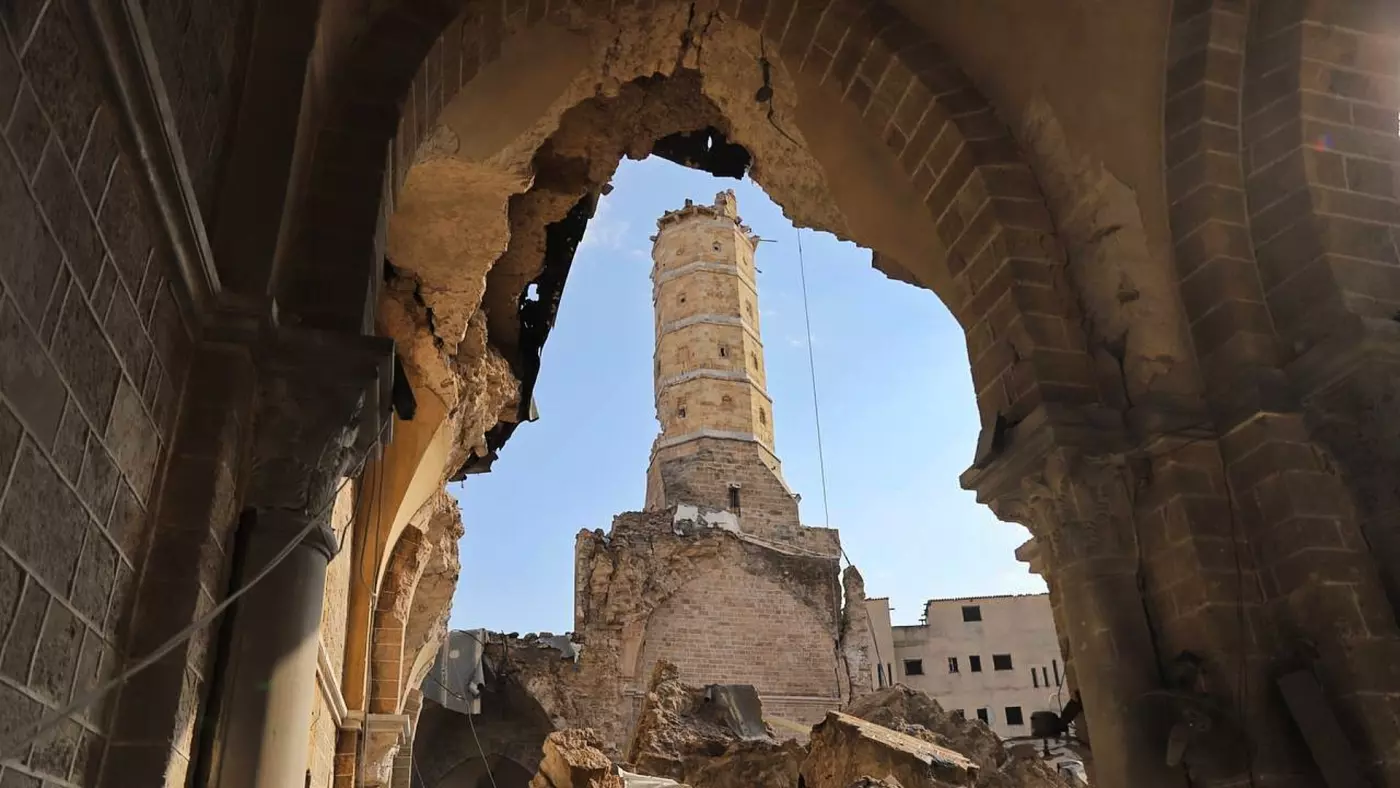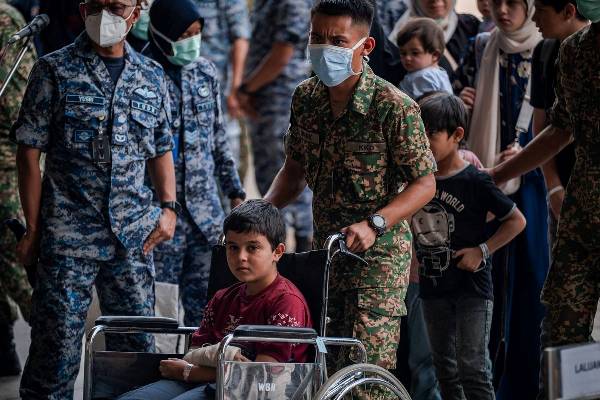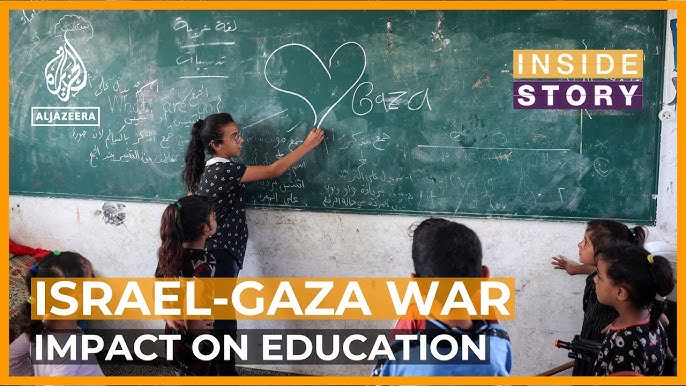Key Highlights
- The Palestine Red Crescent Society (PRCS), supported by OCHA and the World Health Organization (WHO), have completed the evacuation of 72 critical cases from Nasser Hospital in Khan Younis.
- A UN staff member and a PRCS volunteer paramedic were reported killed in Gaza, heightening existing concerns for the safety of aid workers and medical personnel.
- The United Nations Population Fund (UNFPA) reports that newborns are dying in Gaza because their mothers are unable to attend prenatal or postnatal check-ups while the incessant bombings, fleeing for safety and anxiety are leading to premature births.
- A new report by the World Bank highlights that economic activity in Gaza has grounded to a halt and nearly every resident will live in poverty, at least in the short term.
Gaza Strip Updates
- Intense Israeli bombardment from air, land and sea continues to be reported across much of the Gaza Strip, resulting in further civilian casualties, displacement, and destruction of civilian infrastructure. Ground operations and heavy fighting between Israeli forces and Palestinian armed groups also continue to be reported, particularly in Khan Younis, Gaza city and east Deir al Balah. Between 23 and 26 February, tens of rockets were also reportedly fired by armed Palestinian groups toward Israel.
- Between the afternoon of 23 February and 10:30 on 26 February, according to the Ministry of Health (MoH) in Gaza, 268 Palestinians were killed, and 418 Palestinians were injured, including 90 killed and 164 injured in the past 24 hours. Between 7 October 2023 and 10:30 on 26 February 2024, at least 29,782 Palestinians were killed in Gaza and 70,043 Palestinians were injured, according to MoH in Gaza.
- Between the afternoons of 23 and 26 February, three Israeli soldiers were reported killed in Gaza. As of 26 February, 238 soldiers have been killed and 1,400 soldiers injured in Gaza since the beginning of the ground operation, according to the Israeli military. In addition, over 1,200 Israelis and foreign nationals have been killed in Israel, according to the Israeli authorities, the vast majority on 7 October. On 25 February, one Israeli soldier was reported killed and captured on 7 October, based on new intelligence information, and his body remains withheld in Gaza. As of 26 February, the Israeli authorities estimate that 134 Israelis and foreign nationals remain captive in Gaza, including fatalities whose bodies remain withheld in Gaza.
- The protection and safety of humanitarian aid workers and medical personnel continues to be a serious concern amid widespread hostilities and attacks. On 22 February, a UN staff member and several members of his family were killed in an airstrike in Deir Al Balah, according to UNOPS. A volunteer paramedic with the PRCS ambulance centre in Rafah was also reported killed, when his family home in eastern Rafah was struck on 23 February. Since 7 October, 161 UN staff have been killed in Gaza. Between 7 October and 12 February, there were 378 attacks on health care across Gaza, affecting 98 health facilities and 98 ambulances, according to WHO.
- Attacks on or near schools hosting internally displaced persons (IDPs) continue to be reported, according to UNRWA. On 22 February, at least two people were reportedly killed by gunfire at the main gate of a school in Al Amal neigbourhood west of Khan Younis. On 23 February, several IDPs sheltering at a school in Gaza city fled after the school was reportedly hit by artillery fire. As of 24 February, at least 403 IDPs in UNRWA shelters have been killed, and at least 1,385 have been injured, according to UNRWA.
- The following are among the deadliest incidents reported between 23 and 25 February:
- On 23 February, at about 10:40, nine Palestinians were reportedly killed, and others were injured, when a group of people near Askalan School, in eastern Khan Younis, was hit.
- On 23 February, at about 19:00, 24 Palestinians were reportedly killed, including at least three children, and tens of others were injured, when a residential building in Bishara neighbourhood, in Deir al Balah, was struck.
- On 24 February, at about 3:20, eight Palestinians were reportedly killed, and tens of others were injured, when a residential building in Rafah city was struck.
- On 24 February, at about 12:30, three Palestinians were reportedly killed, and others were injured, when a location in Az Zawaida area, in Deir al Balah, was struck.
- On 24 February, four Palestinians were reportedly killed, and others were injured, when a fire broke out in a residential building in Beit Lahia, in North Gaza, upon being struck.
- On 25 February, at about 7:00, three Palestinians were reportedly killed, and others were injured, when a residential building in As Sabra neighbourhood, in Gaza City, was struck.
- On 23 February, PRCS carried out a fourth evacuation mission of wounded and sick patients from Nasser Hospital in Khan Younis, supported by WHO and OCHA. The cases were transported to hospitals in Deir al Balah, Khan Younis, and Rafah and included two newborn babies who had lost their mothers, according to PRCS. In total, since 18 February, 72 critical cases have been evacuated from the hospital, which still struggles to operate with no electricity or running water, shortages of food and water supplies, the accumulation of solid waste, and sewage overflow. Some 200 people have been detained by the Israeli army from the hospital before the operation was concluded, according to the Israeli authorities. On 25 February, MoH in Gaza warned that hospitals in northern Gaza are running out of fuel, including Al Ahli Arab hospital. The hospital which is managing to perform 13 operations per day and cater to 300 outpatients, currently runs at only 30 per cent capacity due to the lack of power. MoH further stated that dialysis and intensive care patients are at risk of death as a result of the lack of fuel for generators, ambulances, and medicines.
- UNFPA reports that there are only five beds for deliveries at the Al Helal Al Emirati maternity hospital in Rafah, one of the few remaining functioning hospitals in Gaza. Despite the lack of such basic needs as sheets, the facility has had to cope with 78 deliveries in one night. “While one woman is giving birth, we bring another case, and there’s no bed,” a midwife quoted in the report said. Newborns are dying because the mothers are unable to attend prenatal or postnatal check-ups while the incessant bombings, fleeing for safety and anxiety are leading to premature births. The lack of supplies, medicine and electricity results in four or five newborns having to share one incubator. The report quotes one of the hospital’s doctors as saying: “Most of them don’t survive.” Infections are rampant from unsanitary toilets and showers, posing particular risks for pregnant women and young children. An estimated 5,500 women are due to give birth in the next month with barely any access to medical assistance, and more than 155,000 pregnant and breastfeeding women are at high risk of malnutrition. Where access allows, UNFPA has been distributing critical medicine and equipment to health facilities across Gaza, including Al Helal Al Emirati, but warns that “the small facility is ill-equipped to handle this level of disaster.”
- According to a new report from the World Bank, the Palestinian economy has experienced one of the largest shocks in recent history, with Gaza’s gross domestic product (GDP) plummeting by over 80 per cent in the fourth quarter of 2023, and dropping 24 per cent in total in 2023. Almost all economic activity in Gaza has grounded to a halt, with little indication of substantial improvement. Widespread internal displacement and the destruction of homes, fixed assets, and productive capacity, complementing preexisting high levels of poverty, “realistically means that nearly every resident of Gaza will live in poverty, at least in the short term.” The West Bank economy has also experienced a 22 per cent decline during the same period, due to a combination of increased movement and access restrictions imposed by the Israeli authorities, which impede workers from reaching their places of work, a decline in trade and private sector activity and the cancellation of work permits for over 170,000 Palestinian workers. The report warns that should the intensity of the conflict remain high beyond the first months of 2024, or the limits on the movement and access in the West Bank not be removed, the economic downturn in the Palestinian economy could become even more pronounced.
West Bank Updates
- On 26 February, a Palestinian man died of wounds sustained on 22 February as a result of an Israeli drone-fired missile that struck a vehicle travelling in Jenin refugee camp, during which two additional Palestinians, including a child, were killed. The man was in his barbershop at the time of the attack.
- Since 7 October 2023 and as of 26 February, 400 Palestinians have been killed, including 102 children, and as of 23 February, 4,575 Palestinians have been injured, including 707 children, in conflict-related incidents across the West Bank, including East Jerusalem, and Israel. During the same period, 13 Israelis, including four members of Israeli forces, were killed and 86 injured in conflict-related incidents in the West Bank, including East Jerusalem, and Israel.
- On 20 February, a Palestinian family comprising six people, including three children, was forced to leave Ein Samiya Bedouin community in Ramallah governorate due to attacks by Israeli setters that included stealing of sheep and opening fire at herders. This is one of three families who have remained in the community after 27 other families were forcibly displaced in May 2023. Earlier on 13 February, threats and physical attacks on herders by settlers from a new settlement outpost near Asfar settlement in Hebron forced a herding family near Kisan village to leave their community along with 100 sheep. Since 7 October 2023, at least 200 Palestinian households comprising 1,222 people, including 595 children, have been displaced amid settler violence and access restrictions. The displaced households are from at least 19 herding/Bedouin communities. The displacement toll represents almost 80 per cent of all displacement from different Israeli practices across the West Bank, including East Jerusalem, since 7 October.
- Since 7 October 2023, 576 people, including 276 children, have been displaced in Area C and East Jerusalem, after their homes were demolished due to the lack of Israeli-issued building permits, which are almost impossible to obtain.
- Latest field assessments show that, since 7 October 2023, 848 Palestinians, including 397 children, have been displaced, following the destruction of 132 homes during operations carried out by Israeli forces across the West Bank. About 95 per cent of the displacement was reported in the refugee camps of Jenin, Nur Shams and Tulkarm.
- Since 7 October 2023, OCHA has recorded 586 Israeli settler attacks against Palestinians that resulted in Palestinian casualties (53 incidents), damage to Palestinian-owned property (468 incidents), or both casualties and damage to property (65 incidents).
- On 22 February, following a fatal Palestinian shooting attack on Road 1 near Az Za’ayyem checkpoint, the Israeli authorities banned the movement of Palestinian-plated vehicles on Road 1 during peak hours between 6:00 and 9:00 for 15 days, affecting the movement of thousands of Palestinians.
Humanitarian Needs and Response Updates | 20–26 February
Food Security
Needs
- The food security situation continues to be extremely critical across Gaza, particularly in northern Gaza, with people reportedly feeding their children animal fodder. Vulnerable segments of the population, including children, the elderly and people with underlying health conditions, are particularly exposed to the risk of malnutrition and famine.
- The food security situation in the Middle Area and southern governorates is also critical, with most of the population queuing for hours to receive food when trucks manage to enter. In Rafah, the situation is increasingly concerning, with growing reports of people stopping aid trucks to take food and eat it immediately.
- There is an urgent need to increase the fleet of delivery trucks.
- There is an urgent need to import the agricultural inputs necessary for reactivating domestic production of essential fresh foods like eggs, vegetables, meat, fish and milk to ensure the availability of a balanced nutrition.
- There is a need to establish secure and uninterrupted humanitarian corridors, with the support of the private sector and a focus on critical resources like fuel and cooking gas.
Response
- Between 19 and 25 February, a total of 18 partners engaged in providing food assistance across the Gaza Strip, reaching around 1.7 million people with food assistance at least once. Rafah Governorate received about 45 per cent of the total food assistance, followed by Deir al Balah (24 per cent), Khan Younis (15 per cent), and northern Gaza Strip (15 per cent).
Challenges and Gaps
- Operating partners are reporting a lack of food to distribute, and some are reporting that existing stocks will last for only two days.
- The large number of people reached with hot meals is still insufficient to meet daily nutritional requirements.
- Ongoing airstrikes and heavy fighting in Gaza continue to affect the flow of food, posing challenges for the conduct of safe and efficient humanitarian operations. Frequent border closures, restrictions, and security concerns hinder the delivery of a consistent and dependable food supply.
- Rafah crossing is now working at a reduced rate and Karem Shalom is encountering closure due to Israeli demonstrators preventing trucks from entering. The humanitarian community is engaging with all relevant stakeholders to address this issue.
Logistics
Response
- As of 25 February 2024, the Logistics Cluster received 6,251 cubic meters of cargo for storage on behalf of 17 organizations in Gaza and has supported 21 organizations with cargo notification services in Rafah. Through the Jordan corridor, the Cluster has transported a total of 3,596 metric tons of relief items on 267 trucks on behalf of six partners.
- The Cluster delivered online training to 79 aid workers on the Service Request Forms (SRF), for storage and transport. In partnership with the IMPACT Working Group, the Cluster also organized an information session with UN agencies on customs clearance challenges in Jordan.
- Cluster’s preparations to facilitate incoming cargo through the Egypt and Jordan corridors over the coming three months are underway. Partners have received a dedicated form for their organization via email and are requested to update it every Sunday. Partners who have not received the form can reach out to palestine.logcluster@wfp.org.
Challenges and Gaps
- Storage and transport capacity inside Gaza remains challenging with ongoing assessments for identification of additional storage options. The Cluster continues to facilitate access to temporary storage, transport, and cargo notification transshipment services.
Emergency Telecommunications
Needs
- There is an urgent need for independent communication platforms for responders in Gaza to coordinate emergency response and deliver aid, amid ongoing communication blackouts and unreliable/intermittent access to telecommunication services.
Response:
- Since its establishment, the ETC has been engaging with the Israeli authorities to obtain authorization to import all essential telecommunications equipment into Gaza and provide independent access to communications for humanitarian responders.
- The ETC has been supporting humanitarian agencies in Gaza with Information and Communication Technology (ICT) assessments, technical advice and information, repairs, and guidance on the use of ICT equipment. Since 9 January, the ETC has conducted 16 ICT assessments in 13 locations in Rafah, and supported 17 humanitarian agencies with ICT repairs, technical advice, and guidance on the use of ICT equipment to maximize the available telecommunications resources on the ground.
Challenges and Gaps
- Limited access to electricity, fuel, and telecommunications services continues to impede the humanitarian response in Gaza.
- The process of importing telecommunications equipment into Gaza remains lengthy and extremely challenging.
Funding
- The Flash Appeal for the occupied Palestinian territory (oPt), which requests US$1.2 billion to meet critical needs of 2.7 million people across the oPt (2.2 million in the Gaza Strip and 500,000 in the West Bank, including East Jerusalem), was extended through the end of March 2024. As of 26 February, member states disbursed nearly $906 million against the updated Flash Appeal (74 per cent); this includes about $616 million out of $629 million (98 per cent) requested for October-December 2023 and $291 million out of $600 million (48 per cent) requested for January-March 2024. For funding analysis, please see the Flash Appeal Financial Tracking dashboard.
- The occupied Palestinian territory Humanitarian Fund (oPt HF) and the Central Emergency Relief Fund (CERF) are currently funding more than 94 ongoing projects in the Gaza Strip to meet urgent humanitarian needs, notwithstanding constraints on the entry and delivery of aid into and within the Gaza Strip. These interventions, totalling about $88 million, address needs in the areas of food security, shelter, water, sanitation and hygiene (WASH), health and protection. Since October 7, the oPt HF has received a total of $88 million in contributions from member states and private donors. Private donations are collected directly through the Humanitarian Fund.
Protection against sexual abuse and exploitation (PSEA) remains a cross-cutting priority for all clusters. Aid distribution must be delivered with dignity and respect. Any wrongdoing can be reported through SAWA toll-free number 164. SAWA will assist and provide services free of charge and with the utmost confidentiality.
* Asterisks indicate that a figure, sentence, or section has been rectified, added, or retracted after the initial publication of this update.
Post Disclaimer | Support Us
Support Us
The sailanmuslim.com web site entirely supported by individual donors and well wishers. If you regularly visit this site and wish to show your appreciation, or if you wish to see further development of sailanmuslim.com, please donate us
IMPORTANT : All content hosted on sailanmuslim.com is solely for non-commercial purposes and with the permission of original copyright holders. Any other use of the hosted content, such as for financial gain, requires express approval from the copyright owners.
 Sri lanka Muslims Web Portal Sri Lanka Muslims News Center
Sri lanka Muslims Web Portal Sri Lanka Muslims News Center

 Donate
Donate


